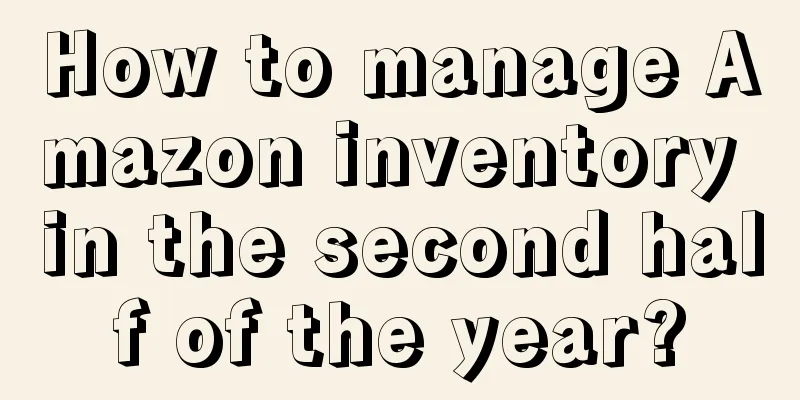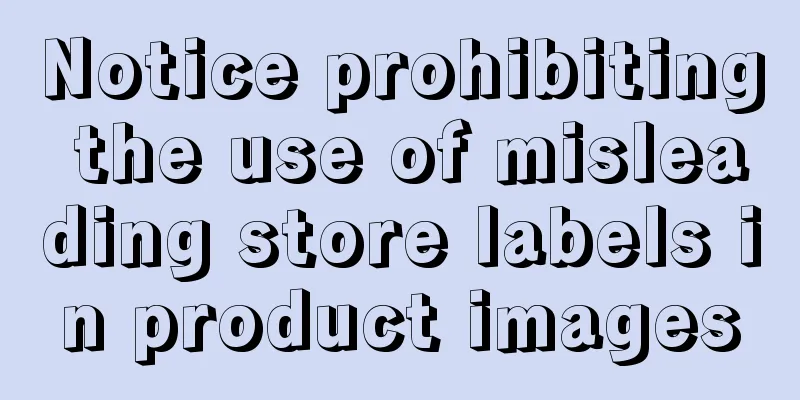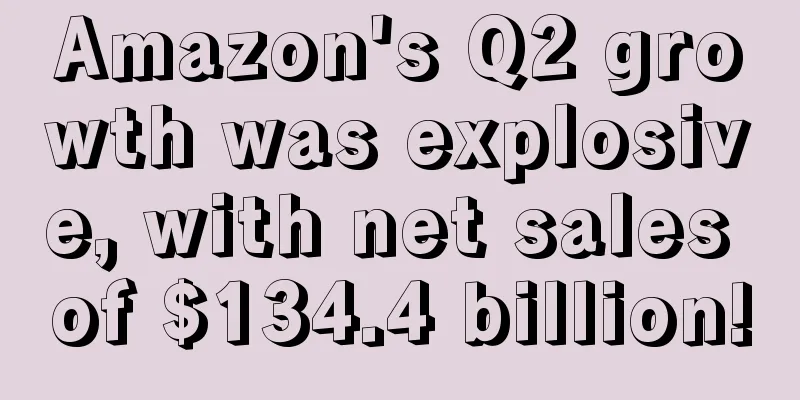How to manage Amazon inventory in the second half of the year?

|
As of July, at least 50,000 Amazon China merchant accounts have been blocked, and overseas inventory worth more than US$1 billion is waiting to be cleared; preparations for the peak season in the second half of the year have begun, but the world is in a state of congestion, with 353 cargo ships motionless and 570 ships waiting to be loaded and unloaded, and goods are always drifting on the sea. Various uncertainties make it even more difficult for sellers to manage their inventory. Where will the redundant inventory go? How should the inventory be optimized and managed in the future? Aiming at the pain points of sellers' inventory management, I hope the suggestions in this article can help you. 1. Deeply tied to suppliers The outbreak of the account blocking incident has made the relationship between factories and cross-border sellers more delicate. Some sellers would rather not pay the deposit and cancel the original orders signed with the factory. The factory can only stare at a pile of production inventory and the capital chain is difficult to operate. A factory revealed that it is now reluctant to accept orders from cross-border e-commerce, especially Amazon. No one knows when their stores will be closed. If they accept the order and something goes wrong, they will lose both money and money. Li Pengbo, former partner of Tongtuo, pointed out that in the future, the best way for factories and sellers to collaborate is to form an alliance, similar to the Nanjiren model. Nanjiren's approach is to use factories as its interest allies, with Nanjiren controlling the core of the brand. Factories and Nanjiren work together to build their business, and there is no question of who exploits whom. This can effectively prevent the order production cycle from being lengthened by some people with connections cutting in line, causing embarrassing out-of-stock situations. Many big brands have specialists responsible for contacting suppliers to ensure that information about order progress can be synchronized. It is necessary for Amazon sellers to understand the production, transportation, and product arrival time. Respect and proper communication will be of great help to sellers. Sellers and suppliers can further understand each other and fix delivery time to a certain extent. 2. Have a 60-day inventory of products Sellers should always keep about 60 days of inventory to avoid the embarrassment of insufficient inventory. Sellers can predict sales by checking Amazon's inventory report and monitoring sales rates. FBA sales rate is calculated based on inventory levels and product sales. Calculation method: (Product sales in the past 90 days + order delivery volume) ÷ the number of FBA SKUs in the same period Sellers can see the sell-through rate for each active product under "Inventory Age" on the Inventory Dashboard in Seller Central. A sell-through rate of over 7 is considered excellent, meaning that sales were seven times higher than the average inventory. If the sell-through rate is below 1, it means that more inventory was held than sold in the past 90 days. 3. Reduce Excess Inventory If a seller overestimates the sales volume of a product, they can relieve inventory pressure in the following ways: Carry out promotional activities Sellers can add coupon codes, run buy one get one free promotions, or offer deep discounts to reduce inventory pressure by lowering prices. Even if the seller is doing a loss-making business, if the products are piled up in the warehouse for a long time, it will cost much more effort than selling them at a low price; Increase keyword bidding Regardless of whether sellers are willing to spend money on advertising, they have to admit that advertising is the most effective way to increase product exposure and drive product sales. Increasing the bidding of the product's target keywords can allow the product to occupy a good exposure "slot", thereby better achieving the purpose of stocking up; Create a list of items to be removed If you have somewhere else to store your products for sale besides an Amazon FBA warehouse, you can choose to create a removal order in Seller Central to move your inventory to that location before being charged a large storage fee. Amazon sometimes runs promotions that offer free inventory transfers. · Clear inventory Clearing out inventory is usually a last resort, and if all other efforts have failed, then sellers can try to sell all remaining inventory at a deep discount. This will allow sellers to regain liquid cash to invest in better products; Donate unsaleable products Sellers can also choose to donate products to charities or non-profit organizations, such as Goodwill, to offset taxes and fees. 4. Prepare for the unexpected The epidemic has caused delays in logistics and product customs clearance. According to statistics, 53% of American consumers have begun to feel that their online shopping experience has declined due to the unstable status of products since March 2020. This requires sellers to prepare additional inventory, or even use third-party storage centers to avoid the embarrassing situation of having no goods to sell in the event of order delays. Of course, if the seller has limited funds, it is best to stay put; 5. If the inventory is insufficient, the product delivery speed needs to be slowed down If the product is out of stock, sellers can reduce the number of orders by raising prices and pausing advertising campaigns. This is a good way to maintain inventory rates. Even if slowing down the speed of product delivery will slightly affect the ranking, it is better than being completely out of stock. Once the product is in stock, the previous price and advertising campaign can be restored; 6. Use inventory management software Inventory Manager from Jungle Scout will help sellers manage inventory and mitigate the risks mentioned above. Inventory Manager is a market demand forecasting tool designed to calculate the inventory requirements of sellers' Amazon FBA business. The tool will predict future sales based on demand, which will help sellers determine the inventory level to avoid out-of-stock or overstocking. |
<<: Details of the entire Amazon operation process and experience sharing
>>: Amazon seller operation statistics/data analysis/shipping plan excel visualization chart
Recommend
What is Sellbrite? Sellbrite Review
Sellbrite is the leading multi-channel inventory a...
Amazon's search page has changed! The reason is...
As the impact of the novel coronavirus outbreak co...
【Find Logistics】Enterprise Entry Channel
【Find Logistics】Enterprise Entry Channel " &q...
Amazon's own privileges? Even its own products are stuffed with small cards
It hasn’t been long since several of Amazon’s top...
What is Senxun Overseas Consulting? Senxun Overseas Consulting Review
Senxun Overseas Consulting is committed to providi...
What is Newegg Business? Newegg Business Review
Newegg Business is an independent B2B platform und...
Amazon added 4 new highlights in March, sellers must read!
Recently, Amazon quietly launched 4 super practica...
Cross-border scams are tricky! Amazon publicly denounces them, and some sellers have been defrauded of tens of thousands!
It is learned that recently, Amazon has filed lega...
TikTok advertising revenue will reach $5.96 billion in the United States in 2022! It is the preferred social platform for shopping!
It is learned that according to eMarketer data: Ti...
1.29 million sold in January! This Chinese product is sold out by Europeans!
It was observed that a few days ago, a piece of ne...
What is Post Planner? Post Planner Review
Post Planner is a tool that can find and share con...
No orders? You should take a look at this product development idea
About the author : An executive of a cross-border ...
Canadian retail e-commerce will maintain strong growth in 2021! Sales are expected to reach 86.52 billion Canadian dollars
It is learned that eMarketer recently released the...
What is Tweepi? Tweepi Review
Tweepi is an AI-based social media marketing tool ...
What is DANA? DANA Review
DANA Wallet is one of the mainstream e-wallets in ...









